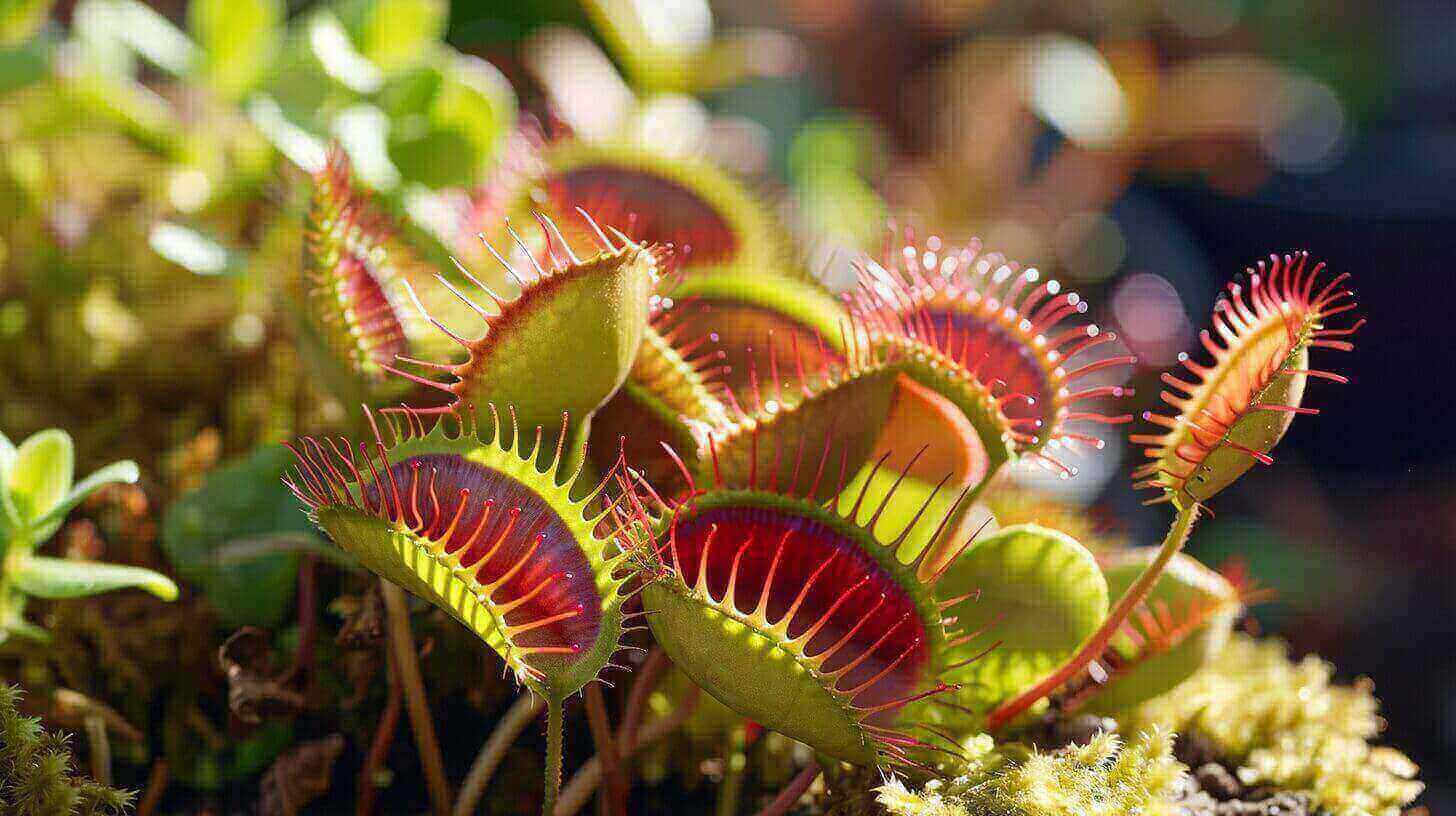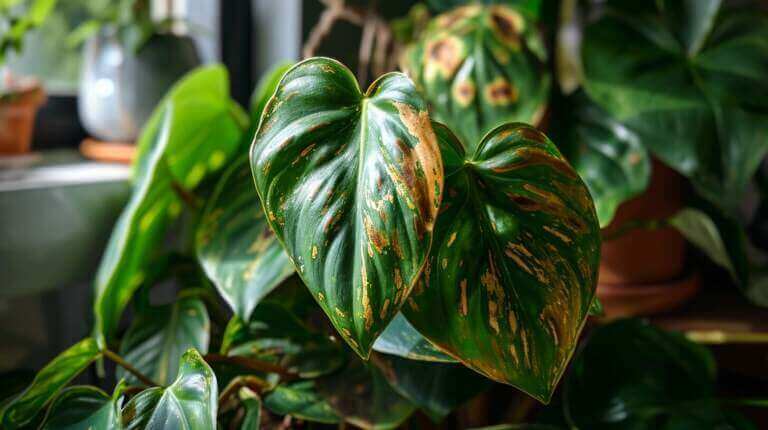A Beginner’s Guide to Growing and Caring for Venus Flytrap Plant
Welcome to my beginner’s guide on growing and caring for Venus flytrap plants. These unique carnivorous plants require special attention to thrive and make for fascinating additions to any home. In this guide, I will walk you through the essentials of nurturing these botanical wonders, from understanding their watering and sunlight requirements to feeding and managing their winter dormancy.
Key Takeaways:
- Proper watering with distilled water or rainwater is crucial for Venus flytrap plants.
- These plants require 6 hours of direct sunlight per day, so make sure to provide adequate lighting.
- While Venus flytraps appreciate higher humidity levels, they can adapt to lower humidity if necessary.
- Feeding your Venus flytrap with small insects is essential for its nutrition, but be mindful not to overfeed.
- During winter dormancy, allow the plant to go through its natural cycle of blackened and dying traps.
Watering, Sunlight, and Humidity Requirements for Venus Flytrap Carnivorous Plant
When it comes to growing and caring for Venus flytrap plant indoors, understanding their specific watering, sunlight, and humidity requirements is essential. These unique carnivorous plants thrive under specific conditions, and providing the right environment is crucial for their health and growth.
Watering Requirements
Venus flytrap plants have specific preferences when it comes to watering. It’s important to use distilled water or rainwater to prevent any harmful minerals from affecting the plant. Tap water, which contains high mineral content, should be avoided. To ensure the plant receives adequate moisture, watering should be done carefully. The soil should be kept moist, but not waterlogged. Overwatering can lead to root rot, so it’s crucial to strike the right balance.
Sunlight Requirements
Venus flytrap plants require plenty of sunlight to thrive. Ideally, they should be exposed to at least 6 hours of direct sunlight each day. If you’re growing them indoors, it’s important to acclimate the plants gradually to brighter conditions. This can be done by placing them in a spot with indirect sunlight initially and then gradually moving them to a sunnier location. Providing the right amount of sunlight ensures that the plants can carry out photosynthesis effectively and stay healthy.
Humidity Requirements
While Venus flytrap plants appreciate higher humidity levels, it’s important to note that they can adapt to lower humidity levels as well. If you live in a drier region with lower humidity, you can still successfully grow these plants. When acclimating the plants to lower humidity levels, it’s recommended to remove the plastic dome they may come in. This allows the plants to adjust to their new environment. However, it’s important to monitor the humidity levels and provide some additional humidity if needed, especially during dry spells.
Feeding and Winter Dormancy of Venus Fly Trap Plants(Dionaea Muscipula)
Now that we’ve covered the watering, sunlight, and humidity requirements for Venus flytrap plants, let’s delve into the fascinating world of feeding and winter dormancy. As carnivorous plants, Venus flytraps rely on insects for nutrients, which makes their feeding habits unique and intriguing.
When it comes to feeding, it’s essential to provide live or dead insects that are small enough to fit inside the plant’s traps. This mimics their natural hunting behavior and ensures they receive the necessary nutrients. However, it’s crucial not to overfeed your Venus flytrap. They require a significant amount of energy to close and digest their prey, so a few insects every few weeks is sufficient.
During the winter months, Venus flytraps go into a dormant phase as part of their natural life cycle. This period is characterized by all the traps turning black and dying. While it may be alarming to see your plant’s traps wither, remember that this is completely normal. It’s crucial to allow your Venus flytrap to go dormant to preserve its long-term health and survival.
To ensure a successful dormancy period, keep your Venus flytrap in a cool location, such as an unheated garage or basement. Reduce watering during this time, as the plant’s metabolism slows down. It’s important to avoid fertilizing or disturbing the plant during dormancy. By providing these optimal conditions, you’ll help your Venus flytrap thrive and prepare for a vibrant spring awakening.
FAQ
How to grow Venus flytraps indoors?
To grow Venus flytraps, you need to provide them with a suitable environment. They require a growing medium that is low in nutrients, such as peat moss, and they need plenty of light. A grow light or a sunny windowsill can provide the necessary light.
How to care for a Venus flytrap?
Venus flytrap care involves providing the right conditions for growth. This includes using distilled or reverse osmosis water, as tap water can often contain minerals that are harmful to the plant. The plant should also be kept in a location that receives full sun, as Venus flytraps need bright light to thrive.
How to feed a Venus flytrap?
Contrary to popular belief, you don’t need to feed your flytrap. The plant gets its nutrients from the insects it traps. However, if you choose to feed it, ensure the food is live and small enough to fit inside the trap.
What is the growing season for Venus flytraps?
The growing season for Venus flytraps typically starts in spring and lasts through summer. During this time, the plant will produce new traps and may even flower.
How to grow a baby Venus flytrap?
A baby Venus flytrap needs the same care as an adult plant. It should be planted in a nutrient-poor medium like peat moss and given plenty of light. The size of the trap on a baby Venus flytrap will be smaller than that of an adult plant.
What are the different varieties of Venus flytraps?
There are several varieties of Venus flytraps, each with its own unique characteristics. They all belong to the carnivorous plant family and are native to the boggy areas of North and South Carolina.
How to care for a Venus flytrap plant?
Venus flytrap care involves providing the right conditions for growth. This includes using a suitable growing medium like sphagnum moss and perlite, and watering with distilled water or rainwater. Fertilizer is generally not recommended as it can harm the plant.
How to grow a Venus flytrap from seeds?
Growing a Venus flytrap from seeds can be a rewarding experience. The seeds should be sown on the surface of a suitable potting mix, such as sphagnum moss, and kept in a humid environment until they germinate.
What insects do Venus flytraps eat?
Venus flytraps eat a variety of small insects. The insect must be alive when it triggers the hairs inside the trap, causing it to close.
When do Venus flytraps go dormant?
Venus flytraps typically go dormant during the winter months. During this time, the plant’s growth slows down and it may appear to be dead, but this is a normal part of its life cycle.
Do Venus flytraps need fertilizer?
Unlike most plants, Venus flytraps generally do not need fertilizer. In fact, fertilizing can actually harm the plant. They get their nutrients from the insects they catch.







